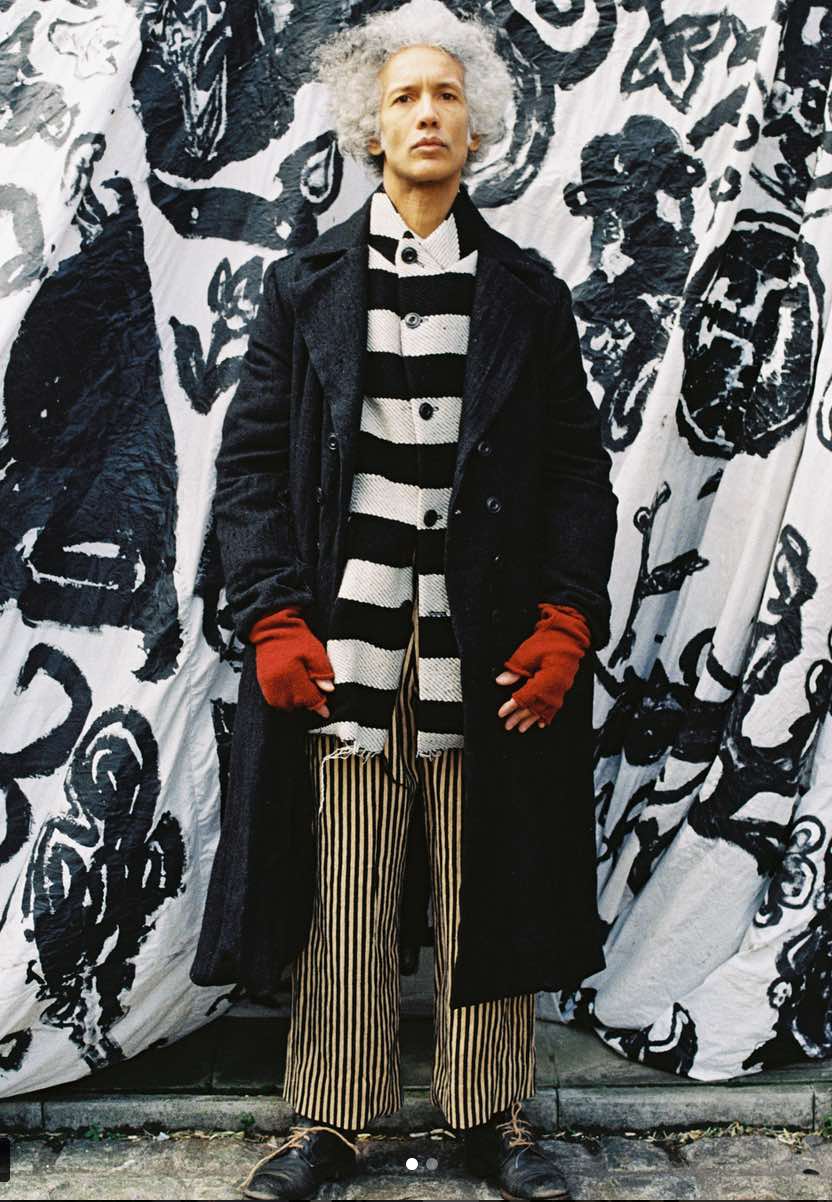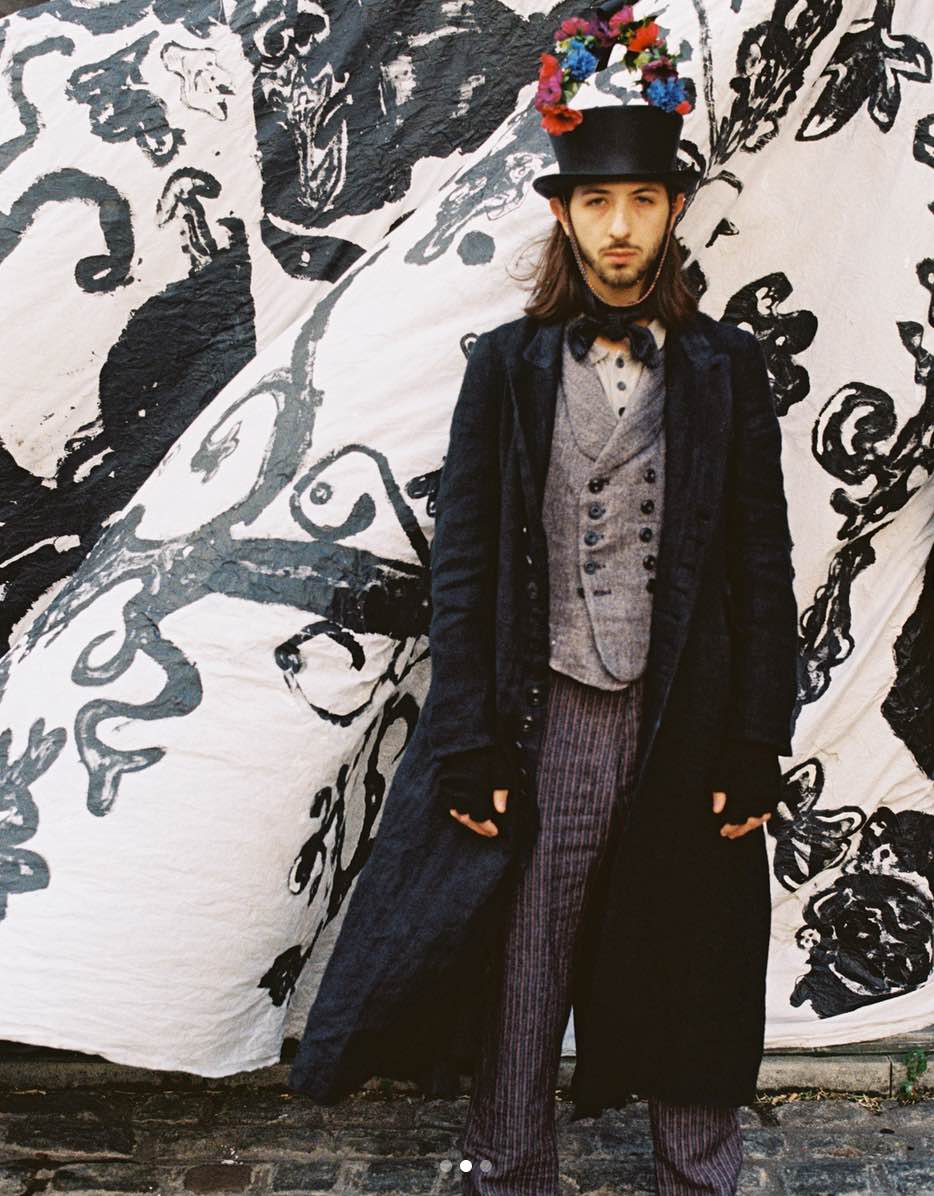John Alexander Skelton: looking back
Skelton’s aesthetic offers a ragged romance: sweeping coats in corduroy and wool, high-waisted trousers tied with rope, checks and stripes next to raw hessian colours
By BEL JACOBS
A few days before, some friends and I had been calling the catwalk show outdated and out-of-touch, a format in need of serious refreshment.
That evening, as if to hammer home the point, we found ourselves in a church in Dalston, surrounded by gavorting, mask-wearing grotesques in a ‘fashion show’ that pushed the boundaries of both words.
Its author was John Alexander Skelton, a designer for whom the term ‘one-to-watch’ seems trite. Born in York, Skelton gained a Master’s in menswear at Central Saint Martins before winning a scholarship at Sarabande, the softly treading but increasingly powerful incubator from the Lee Alexander McQueen Foundation.
Sarabande picks the brightest and best for attention, those who - like its founder - blasts through stereotypes. These are designers who merge disciplines and champion a beautiful anarchy. It is Skelton’s natural home, where his multiple obsessions of history and folkloric tradition, of costume and class conflict, of nature and environment, can be nurtured.
Skelton’s aesthetic offers a ragged romance: sweeping coats in corduroy and wool, high-waisted trousers tied with rope, checks and stripes next to raw hessian colours - and always, the most astonishing headwear, co-created with milliner Stephen Jones. The characters who emerge are part country bumpkin, part fallen Georgian poet.
None of this is illusion. Key to Skelton’s work is a joyously lo-fi methodology in which scraps are exquisitely repurposed, yarn is knitted from rare breeds of British sheep and pieces are handwoven, hand knitted and hand dyed. Sustainability is all.
Skelton’s previous collection, which took place last May, was inspired by the Peterloo Massacre of 1918, which saw armed cavalry charge into a peaceful pro-democracy protest in Manchester, killing 15, injuring between 400 to 700.
In Skelton’s event, models streetcast for their ragtag beauty read aloud from Percy Bysshe Shelley’s poem ’The Masque of Anarchy’, in turn inspired by the massacre, to create a haunting tribute to an event that shook the world.
For Collection IV, presented on the Twelfth Night, Skelton celebrated Wæs Hæl or wassailing – an ancient English in which revellers sing to promote a good harvest.
Pedestal tables bore candles and cups of mulled cider; wall coverings scrawled with roughly drawn trees and masks were punctuated, eerily, by the masked faces of the models themselves. Old faces from the show before, including set designer Simon Costin, the men eventually emerged, each intoning in unpractised voices the line: “In comes I as have never been seen before”.
The men began to dance, awkwardly, in pairs, allowing the audience to see the clothes - immaculately tailored, hugely evocative - in slow, halting movement. But, beautiful as the clothes are, their true value lies in their role as expression of Skelton’s philosophy. Here are values which plug completely into contemporary themes: of community, of the clash between groups of differing creeds, of how we use our earth, of how we communicate what’s important to us.
The answer to the last is not the catwalk - costly, elitist, fringed by celebrities checking their phones. Skelton looks to the past for inspiration but his work feels utterly of its time. Fashion is changing. And, as the industry struggles to find its place in an increasingly dangerous world, Skelton’s voice is more vital than ever.
Find John Alexander Skelton on Instagram here.




